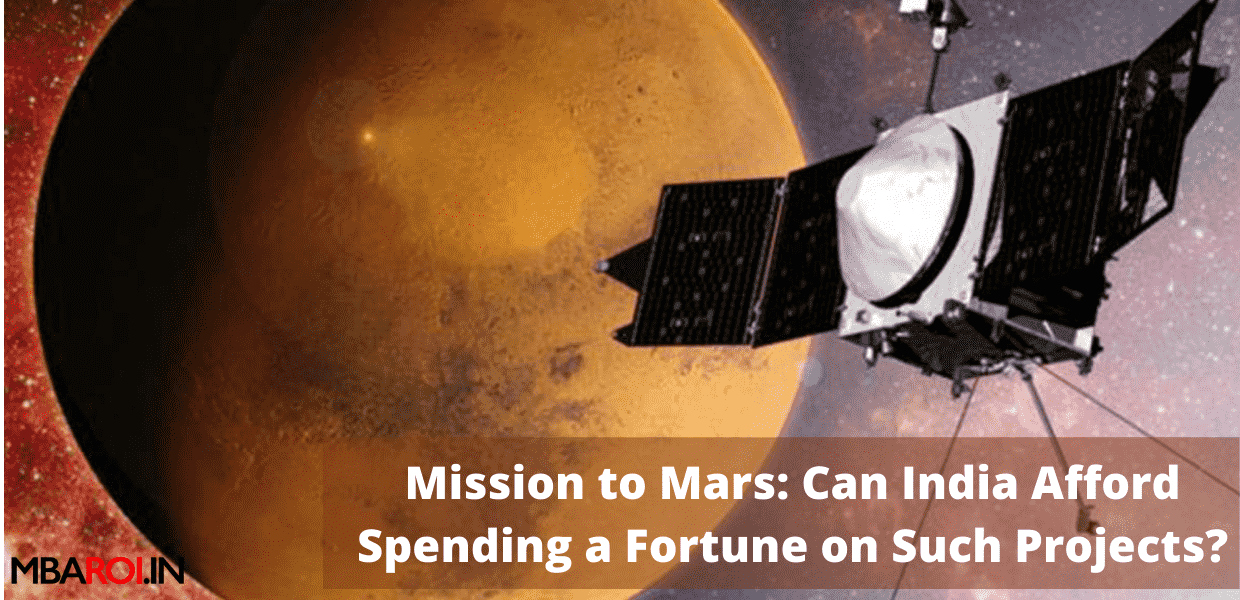India’s mission to Mars was succeeded through Mangalyaan. Mangalyaan or the Mars Orbiter Mission (MOM) is a space examination project launched by the Indian Space Research Organization on November 5, 2013. This Martian space probe project is in orbit since September 24th, 2014. India was the first Asian country and fourth country in the world to reach Mars. The project was approved by Prime Minister Manmohan Singh on 3 August 2012.
The project was launched by the Polar Satellite Launch Vehicle (PSLV) C-25 from Space Center at Sriharikota. Indigenously built Mars orbiter aimed at studying Martian atmosphere, its surface features, mineralogy, and morphology.
Mars Orbiter Mission objective was to develop technologies that are needed in planning, managing, designing the operations of this interplanetary work. In 2018, MOM completed four years in orbit around Mars, despite the designed mission life of six months only. ISRO is now working on developing a follow-up mission.
This was India’s biggest achievement in space and was lauded all over the globe for its success and cost-effectiveness. Mangalyaan’s trajectory in the Martian circle provided a prodigious amount of data to Earth. The Mars Colour Camera (MCC) on the orbiter took 980+ images and prepared the Mars Atlas.
The orbiter worked in good condition even after 5 years and is still performing well on its tasks. The Indian Space Research Organization (ISRO), after its studies, projected the total cost at Rupees 454 crores (67 $ million).
Also Read: What is ‘Atmanirbhar Bharat Abhiyan’ announced by PM Narendra Modi
India’s Space Mission, Achievements, and Its Costs
India spends very little of its fortune in terms of the percentage of GDP compared to other governments of the world. There is a question that often stands as a critic for all the space explorations India undertakes. The question is that whether India should spend its possessions on such expensive projects? While India still deals with a number of economic issues like poverty, unemployment, low per capita income, and more, can we afford this glory? The answer is, ISRO generates revenues by launching satellites of other countries. A rupee spends by ISRO generates 3.6 times returns. The space programs cannot wait till all the citizens of the economy are agreed.
- For the projects that fail, the justification is that failure is part of science. We will learn new ways of how not to do things. Scientists depend a lot on the failures to arrive at a certain mark. It demonstrates new findings and new learnings.
- MOM was a technology demonstration of India’s capability in space exploration. All of this is not just a nonsensical poem but it attracts a substantial market share in this sector. This is the time that a developing country like India must take substantial moves in space technology.
- It is a misbelief that space activity is a thing of wealthy industrial countries with no value to developing nations. Investment in science and technology builds competence and ability and develops the kind of skills associated with the project that benefits the economy and society.
- Spending an amount of over $70 million on space projects is considered a small investment by international standards.
- Satellites are one of those technologies that help rebalance the economies and India wants to be a part of this action. With Mangalyaan, India has entered a strong footing in the positioning into international markets for space products. Considering India’s requirements in this century, India has taken a few steps in the field of the commercial satellite market and is also selling data captured from satellites.
- India’s Mars mission is an example of its ‘big ideas’ and prerogative. This calls for more private investments in the country and also it is important to attract investment (FDI) in the space sector. The success of the mission has helped India to change the global outlook towards India. India is now a path breaker for space programming and more countries will now approach India for the launch of such crafts.
- This successful Mission has named India as the first Asian country to achieve this feat. Apart from the India United States, Europe, and Russia were the only countries that have orbited or landed on Mars.
- India has achieved this prestigious mission at an unexpectedly low cost, which is just a sixth of the estimated cost of the US-NASA mission. Other countries can witness the financial perks of taking India’s services in their space satellites and prerogatives. This will further reap commercial benefits to the country in the future.
- The program will open up more innovations in the fields of communication, identifying problem areas, solar existence. ISRO can easily capitalize on this and look forward to getting satellite launch contracts from other countries. In this way, ISRO can easily undertake multi-million dollar projects and have them sourced.
- India faces enormous Brain-drain problems which are evident from the fact that NASA employs a lot of Indian scientists in the USA. The finest of Indian brains across the country migrate to USA or Europe for space research. This success will increase the ambits of ISRO and employ more Indians so that they can happily stay behind and work for their own country.
Arguments against the Mission to Mars
Since India is in a developing stage, and the failures of the space research programs hugely fall back on the economic growth and GDP. The large amounts of money being spent on the missions that fail could dawdle the welfare activities and projects that directly help in the growth of the economy.
Although this money spent can be recouped there are no immediate benefits. India has limited resources and it was not the most important thing India could have done at this time. Allocating of resources need to be done sensibly when there are so many important issues to tackle.
Have you Read: Make in India: The Idea Will Make India a Manufacturing Hub
Conclusion
There are believers, who advice prioritizing poverty issues over such missions. But so far India is working to eradicate economic problems and there is budget for each issue. Likewise, India has a budget for space programs also because these are useful in prompting innovations in a country. India tasted success in the first attempt which is a moment of history. This has kindled competition among the Asian nations. It is India’s turn to put China back by taking a step ahead.
Mars exploration and other space research programs are here to stay. Around the globe, some of the other countries are spending on orbiters and robotic rovers. There are surveys going on about the microbial life of other space elements. Their e is a lot of scope and enhancement to be seen in this arena in near future. India should not lag behind in this developing space.
There is a lot of financial and knowledge benefits to be reaped from these advanced steps in the form of outsourcing space activities to India. There are hundreds of questions about an unexplored world that are likely to come from probing planets like Mars. There is a habitable world that gradually evolved away from earth which benefits in the future for the residents of earth. Any achievement and step forward will give India the edge and recognition.
Read Current GD Topics:
- Online Education – Benefits, and Challenges.
- Farm Bill 2020- Pros, Cons, and Challenges
- Make in India: The Idea Will Make India a Manufacturing Hub
- Digital Payments in India
- What is ‘Atmanirbhar Bharat Abhiyan’ announced by PM Narendra Modi
- How 2020 will shape 2021
- Lesson for the world from covid 19
- Unemployment in India




